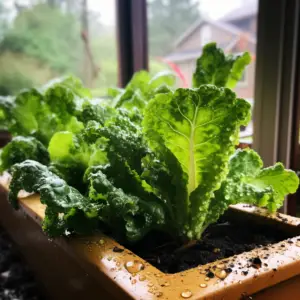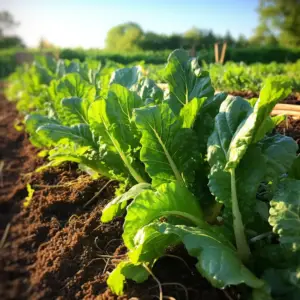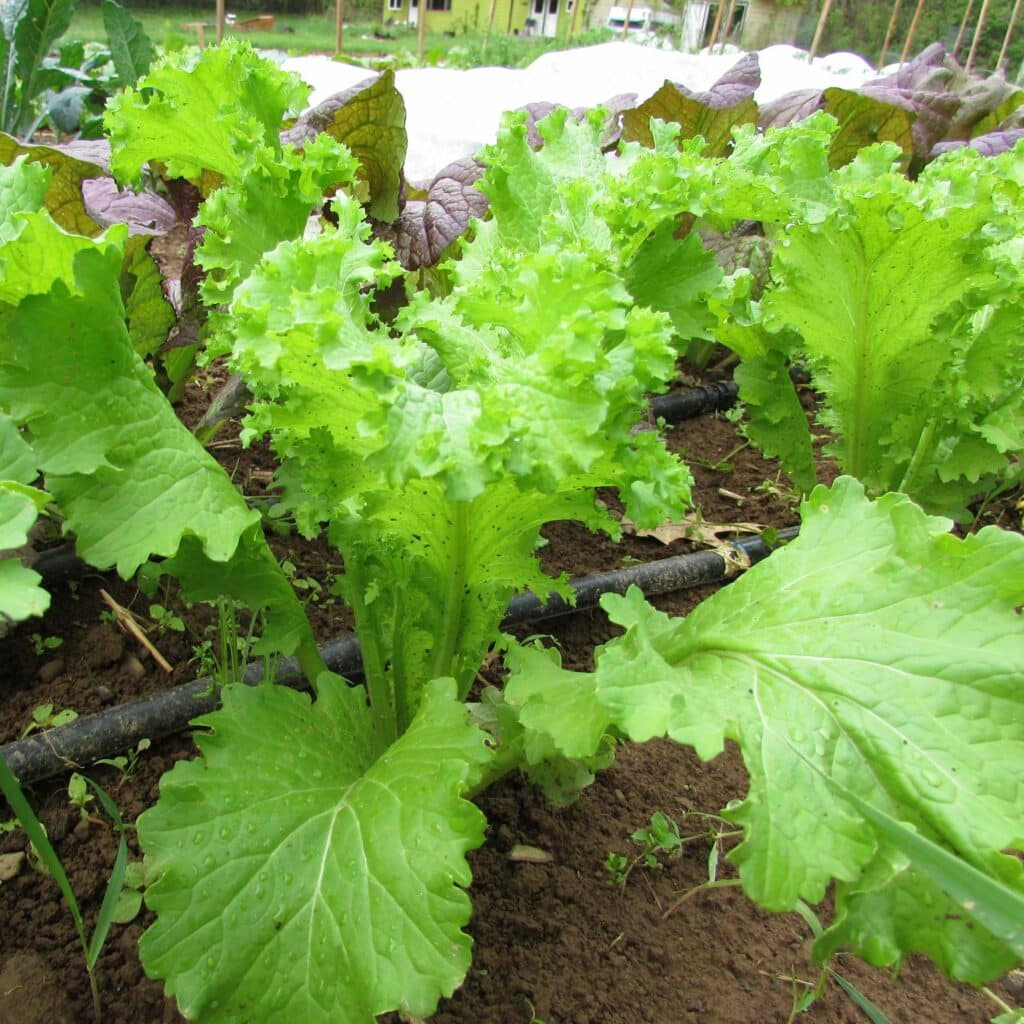Mustard and Turnip Greens, Mustard green and turnips are members of the cabbage family that are cool-season crops. They can only be grown in the early spring and fall when the weather is cool.
Mustard is only planted for its leaves. On the other hand, turnips are grown for two reasons; the leaves are eaten as greens, and the roots are cooked like beets and potatoes. When properly cooked, mustard and turnip greens are high in vitamin A and C and minerals.
Table of Contents
Mustard Greens Vs. Turnip Greens: Comparison

This section of the article will take you through a quick comparison of mustards and turnips, from their cultivation through their preparation.
Varieties
Mustard is available in curled or broadleaved variants. The curled mustard leaves are narrow and wrinkled, similar to spinach leaves. The leaves of broadleaved mustard are large and flat.
Curled mustard can be cultivated later in the winter than broadleaved mustard because it can endure lower temperatures. Some gardeners dislike curled leaved mustard because the wrinkled leaves are difficult to clean of dirt and sand. If your farm is appropriately mulched, though, you will not have this problem.
On the other hand, turnips can be utilized for both the leaves and the roots. A greens-only variety might not produce a good root. A variety intended for root production, on the other hand, can be picked for greens.
Site Section
Mustard and turnips should be sown in full sun. They also require well-drained soil for optimal development.
Mustard makes a great border for a flower bed or a sidewalk. Curled and broadleaf variants are lovely and offer a splash of color to a flower bed. Mustard and turnip greens can be cultivated in window boxes and containers on an apartment patio or balcony.
Planting
Both mustard and turnips should be planted as soon as the land can be worked in the spring. If the soil temperature is 40 degrees F or greater, the seeds will sprout.
You should start planting fall crops 8 to 10 weeks before the first forecast frost. Mustard and turnips thrive nicely all winter in Texas and other coastal areas. Make ridges six inches high and 18–24 inches apart in the soil. Let the ridges settle or pack them before planting.
Before planting, drag the top from the ridges with a hoe or a rake to broaden the planting bed to roughly 10 inches.
Plant two rows of mustard and turnips on each ridge if the ridges have been constructed 3 feet apart for other vegetables. One row of seeds can also be planted on each ridge side.
Sow the seeds in a wet environment. For fall crops, this is critical. Lightly cover the seeds with compost or soil, then water the rows to speed up the sprouting. Cover the seeds with light-colored mulch or sand to keep the rows cool when planting a fall crop.
Until the young plants break through, water the rows regularly to prevent soil crusting. Under excellent conditions, most plants should be up in three to seven days.
Make two or three plantings ten days apart if you want a steady supply of fresh, delicate mustard and turnip greens.
Fertilizing
When planting mustard and turnips, fertilizer is required. So, you will need to till the soil before planting any of them, then spread 2 to 3 pounds of garden fertilizer, such as 15-5-10, over every 100 square feet. One cup of fertilizer should be used in every 10 feet of a row if only one row is to be planted. Phosphorus, the middle number on the fertilizer bag, is significant in producing healthy turnip roots.
Care during the Season
Weeds must be kept out of mustard and turnip greens, especially while young. The weeds should be pulled out by hand or with a hoe, but don’t go too deep with the hoe, or you’ll damage the crop’s roots.
When the row of mustards and turnips becomes overcrowded, you should thin them out by plucking a few plants. Greens from small mustard and turnip plants are tasty. The mustard plants should be spaced about 6 inches apart. Turnips should be spaced 3 to 4 inches apart. Keep in mind that overcrowding hinders the development of turnip roots.
Mustards and turnips, too, require enough nitrogen to turn a dark green color. Thus you will require to apply half a cup of fertilizer every 10 feet of a row when the plants are 4 to 5 inches tall. The fertilizer should be distributed around the plants. Next, it should be lightly mixed with the soil and then watered in.
Insects
Mustards and turnips need to be protected against pest infestations by using insecticides. Insecticides can be found mainly at garden centers.
Read the labels before applying insecticides and always follow the cautions, warnings, and directions. Also, because greens are harvested frequently, adhere to insecticide waiting periods.
Harvesting

Until the weather gets hot, mustards and turnip greens are fantastic. They become tough and strong flavored when exposed to too much heat.
The best time to harvest mustard greens is when they are young and tender. Mustard greens should be harvested by removing the large outer leaves and allowing the inner leaves to grow. You can also cut the plant in half and use the whole of it.
Most turnip variants produce greens in 40 days. Turnip roots take about 50 to 60 days to develop. Turnip leaves should be harvested when they are 4 to 6 inches long by pulling the entire plant. Roots with a diameter of 2 to 2.5 inches can be harvested. If they are left out for too long, they will become tough and stringy.
Storing
Mustard and turnip greens can be kept in the refrigerator in a sealed plastic bag for several days. In a cool, humid environment, such as a root cellar or the bottom of the refrigerator, turnip roots will hold for several weeks.
Preparation
Mustard greens and turnip greens should both be cooked until tender. Only use the water that remains on the leaves after being washed.
Taste
Both mustard and turnip greens have a slightly spicy and peppery taste.
Conclusion
The primary distinction between mustard and turnip greens is their variety. However, there is no difference in how they are cultivated, prepared, or taste.


